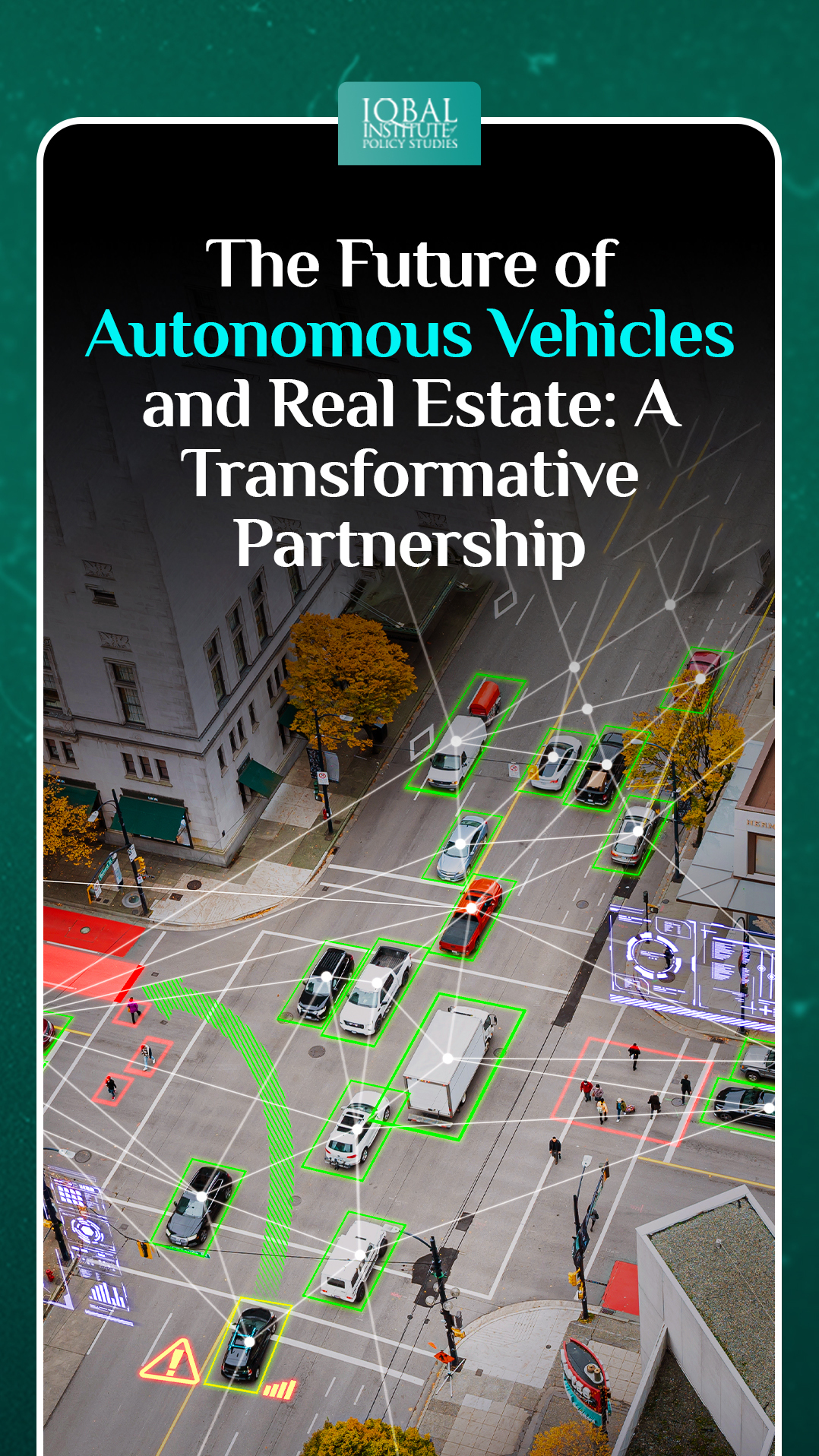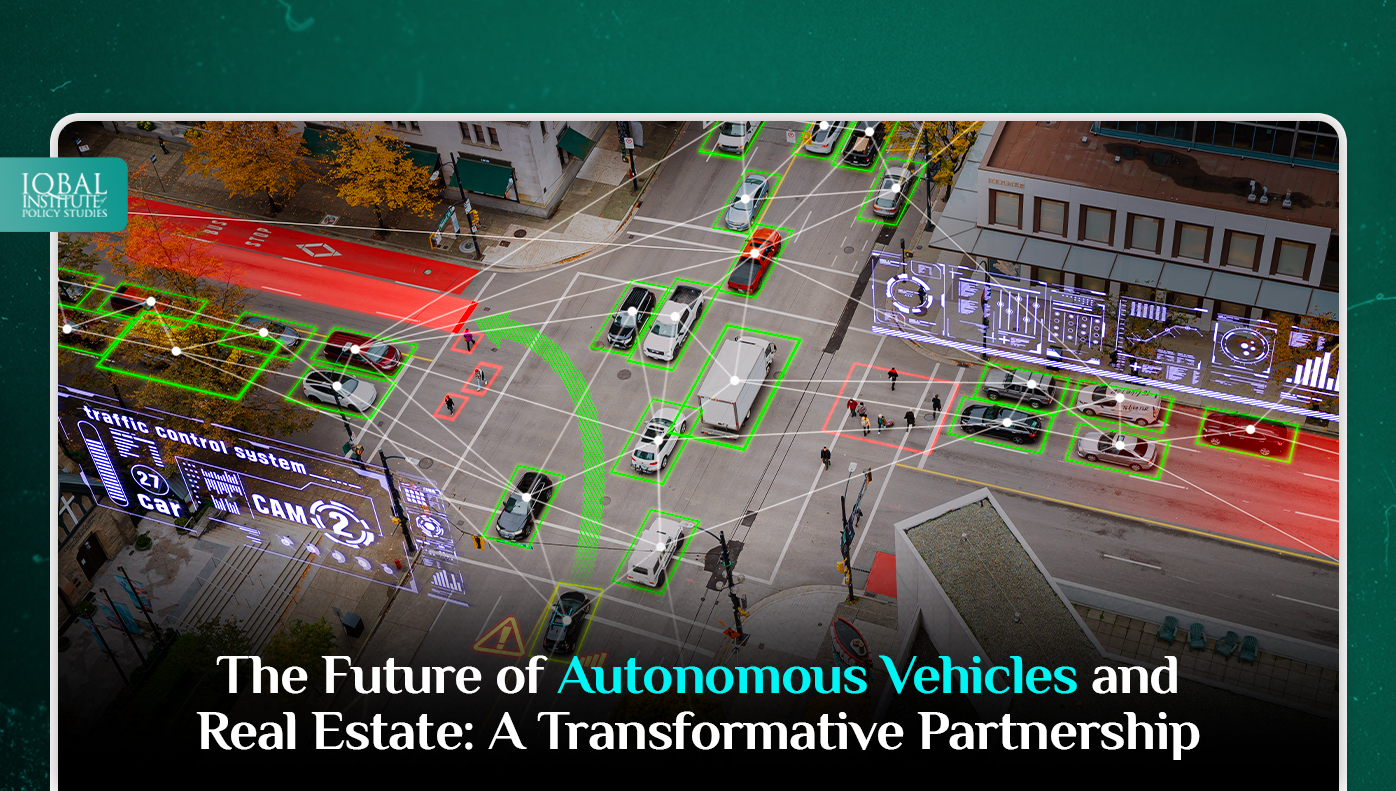The automotive industry is on the brink of a seismic shift. It promises to transform the way people commute, live, and even design the cities. Autonomous vehicles (AVs), often referred to as self-driving cars, are no longer a futuristic dream but a tangible reality. As these cutting-edge vehicles continue to advance, their impact on real estate is becoming increasingly evident. The AVs are poised to transform urban mobility, offering more efficient and customizable transportation options that could reduce private car ownership. This shift is prompting real estate stakeholders to adapt and explore new opportunities in this evolving landscape. Moreover, properties located in areas well-connected to AV networks and transportation options are likely to see increased demand, influencing property values and investment strategies. While challenges like land use, infrastructure, data security, and policy must be addressed, the future of AVs and real estate offers a transformative partnership that will reshape our cities and the way we live, work, and experience urban life.
The Autonomous Vehicle Revolution: A Glimpse into the Future
A significant portion of the emerging global middle class is poised to show interest in purchasing automobiles. It is anticipated that car sales will surge from approximately 70 million annually in 2010 to 125 million by 2025, with over half of these expected to be acquired in urban areas. In fact, some automotive experts have even gone to the extent of forecasting that if current trends continue, the existing global car fleet, currently standing at 1.2 billion vehicles, could potentially double by 2030 (Bouton et al., 2015). Furthermore, autonomous vehicles are poised to revolutionize transportation in unprecedented ways. A convergence of advanced technologies, including artificial intelligence (AI), sensors, and connectivity, is driving this transformation. AVs offer the potential to:
Improve Road Safety
According to the World Health Organization, road traffic accidents are responsible for 1.35 million deaths annually (World Health Organization, 2022). AVs, with their ability to eliminate human errors, could drastically reduce accidents.
Enhance Mobility Access
AVs have the potential to make transportation more inclusive by providing mobility solutions for the elderly, disabled, and those without access to traditional driving.
Reduce Traffic Congestion
Autonomous vehicles can communicate with each other and optimize traffic flow, potentially reducing congestion and commute times.
Increase Efficiency
AVs can operate 24/7, improving the utilization of vehicles and potentially reducing the number of cars needed overall. Self-driving vehicles have the potential to reduce the expense of individual transportation by approximately 30% to 60% when compared to owning a private car (Bouton et al., 2015).
Environmental Benefits
Autonomous vehicles (AVs) have the potential to provide several environmental advantages, including the optimization of driving behaviors, the implementation of platooning strategies, and the promotion of ride-sharing, all of which can lead to a reduction in greenhouse gas emissions, decreased fuel consumption, and improved air quality. With the proliferation of autonomous vehicles (AVs), there is a notable enhancement in road capacity, potentially resulting in emissions reductions of up to 30%, provided that vehicle speeds do not surpass an optimal threshold (Silva et al., 2022).
The Real Estate Impact of Autonomous Vehicles
The integration of AVs into the daily lives will have far-reaching implications for real estate. Here is a closer look at how AVs will reshape the real estate landscape:
Changing Commute Patterns and Urban Development
One of the most significant effects of AVs on real estate will be a shift in commute patterns. As AVs offer more comfortable and productive travel experiences, people may be willing to live farther from city centers. This could lead to the following real estate trends:
Suburban Revival: Suburban and exurban areas may experience increased demand, potentially boosting property values in these regions.
Reduced Urban Parking Demand: If AVs can park themselves efficiently or remain in use throughout the day, the demand for urban parking spaces may decrease.
Repurposing Parking Lots and Structures
The advent of AVs may render traditional parking lots and structures obsolete. According to the International Parking Institute, there are an estimated 2 billion parking spaces in the United States alone (Margolies, 2023). According to research, approximately 30% of the traffic population spends an average of 8.1 minutes actively searching for available parking spots (Parmar et al., 2020). As AVs reduce the need for parking, these spaces can be repurposed for real estate development, potentially creating new green spaces, parks, and public amenities, expanding commercial and residential properties, and encouraging mixed-use developments that integrate retail, housing, and public spaces.
Transit-Oriented Development (TOD)
Transit-oriented development, already a trend in urban planning, is likely to gain further momentum with AVs. TODs emphasize mixed-use developments near transit hubs, promoting walking, cycling, and the use of public transit. AVs could enhance TODs by improving last-mile connectivity from transit hubs to final destinations, increasing accessibility to transit for individuals with mobility challenges, and reducing the need for large parking facilities at transit stations.
Impact on Commercial Real Estate
The commercial real estate sector will also experience significant shifts due to AVs. Online shopping trends, combined with AV delivery services, could reshape the retail landscape.Fro insatnce, the rise of AVs could lead to an increased need for strategically located delivery and distribution centers. Also, traditional retail spaces may evolve to accommodate experiential shopping and showroom-style experiences.
The Rise of Autonomous Shuttles
Autonomous shuttle services are already gaining traction in urban environments. According to the McKinsey report “Mobility’s Second Great Inflection Point,” autonomous shuttles could serve 60% of all urban mobility demand by 2030. These shuttles can provide: Efficient first-mile and last-mile transportation, mobility solutions for underserved neighborhoods, and enhanced connectivity to public transit systems.
Real Estate for Testing and Development
The development and testing of AV technology require specialized facilities. Autonomous vehicle manufacturers and tech companies are investing in research and development (R&D) centers and proving grounds. These developments have led to increased demand for real estate in proximity to AV R&D centers, potentially boosting local property values.
Conclusion
The future of autonomous vehicles is unfolding before our eyes, and its impact on the real estate sector is undeniable. As AVs continue to advance, they will reshape where and how individuals live, work, and play. The real estate industry must adapt to these changes, embracing new development opportunities, repurposing outdated infrastructure, and designing urban environments that cater to the evolving needs and preferences of residents and businesses. As AVs become an integral part of our daily lives, their partnership with real estate will continue to evolve, driving innovation and enhancing our communities in the process.
References
Bouton, S., Knupfer, S. M., Mihov, I., & Swartz, S. (2015, September 1). Urban mobility at a tipping point. McKinsey. Retrieved September 4, 2023, from https://www.mckinsey.com/capabilities/sustainability/our-insights/urban-mobility-at-a-tipping-point
Margolies, J. (2023, March 9). Awash in Asphalt, Cities Rethink Their Parking Needs. The New York Times. Retrieved September 4, 2023, from https://www.nytimes.com/2023/03/07/business/fewer-parking-spots.html
Parmar, J., Das, P., & Dave, S. M. (2020, February). Study on demand and characteristics of parking system in urban areas: A review. Journal of Traffic and Transportation Engineering (English Edition), 7(1), 111-124. https://doi.org/10.1016/j.jtte.2019.09.003
Silva, O., Cordera, R., & Gonzelez, E. G. (2022, July 15). Environmental impacts of autonomous vehicles: A review of the scientific literature. Science of The Total Environment, 30. https://www.sciencedirect.com/science/article/pii/S0048969722017089
World Health Organization. (2022, June 20). Road traffic injuries. World Health Organization (WHO). Retrieved September 4, 2023, from https://www.who.int/news-room/fact-sheets/detail/road-traffic-injuries
This article is written by Haneen Gul. Haneen is a research analyst at the Iqbal Institute of Policy Studies (IIPS).



Leave a Reply